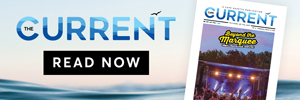Check out second-tier wines when hype boosts first-tier prices
Let’s start with some housekeeping news. This W. Blake Gray article on interstate shipping of booze may be of interest. Looks like SCOTUS may be taking another case due to the 6th Circuit’s most recent decision ignoring the previous ruling: www.wine-searcher.com/m/2020/11/supreme-court-opens-another-case-of-wine.
Reviews on 2018 Bordeaux claim those from cooler Fronsac, N. Medoc, and St. Emilion and St. Julien were stellar while those from warmer Graves, Margaux, S. Medoc and parts of Pomerol need careful selectivity. To quote Panos Kakaviatos, “The dry heat of the vintage posed greater difficulties for hotter soils.” Many critics claim that with proper selection, the hot, dry 2018 vintage may rival the vaunted 2010s. The Pauillac Cabernet Sauvignon is showing the highest alcohol level ever seen in the region, according to Chateau Mouton Director Philippe Dhalluin. Other Bordeaux producers claim global warming is causing a paradigm shift in winemaking. The 2019 may obviate that thinking. Sauterne and Barsac 2018 may lack freshness, except those from cooler estates. The great news is that second-tier wines from the cooler estates are wonderful, with exceptional QPR allowing Bordeaux lovers lower prices. These are recently released; I have not been sampling. Rest assured when the smoke clears around March, I’ll be sending some advisories.
In the meantime, try to turn down the volume on “best ever,” “once in a lifetime” claims of purveyors and writers. Too many are using terms like “careful winemaking” (trust me, those that stay in business always employ careful winemaking) and “end of over-extracted wines.” Here is an example from Chateau Belcier GM Jean-Christophe Meyrou. Read the last sentence carefully. “2018 exudes fresh floral aspects combined with ripe fruit. The nuanced palate, polished tannins and freshness on the finish make this one of the best wines in terms of price/quality ratios in 2018. We understand now the very real potential of over-ripeness," and the operative word is “now.” The likely suspects are touting the 2019 as possibly better. Longtimers may remember when this type of hyperbole is rolled out, one of the vintages’ prices will be a better bargain. Patience is key. Same very hot summer but a cooler harvest season allowed more hang time and slightly better acidity.
As a bellwether, let’s look at Chateau Mouton, where a bottle of the 92-point 2011 is being sold for $581, ready now; the 98-point 2009, ready now to 2045, is $1,115; the 2010, 97 points, is at $1,155, ready in 2023. In this market, the buy is the 2014, 98 points, $550; its window is 2025-45. Is it worthwhile? In 2006, I bought a case of three 2000 vintage for extra-special occasions, ready 2020-50, for $874.Today’s best price would be $6K plus. This year, Thanksgiving, our anniversary and Connor’s birthday coincided. The last bottle was excellent, but you can bet I wouldn’t pay $2K for the privilege. This article from Liber Pater describes my position fairly well. Love to read comments: www.wine-searcher.com/m/2020/11/the-morality-of-buying-expensive-wine.
Those who are drinkers of fine Bordeaux would be far better served with Chateau Leoville Las Cases 2015, 97 points. A 6-pak runs about $1,300, ready 2023. With 85 percent Cabernet Sauvignon, 9 percent Cabernet Franc, and Merlot, it is dark violet-tinged, ruby garnet-colored with currant, blackberry jam, nougat, oak-driven spices, graphite and a hint of caramel. On the juicy palate look for more blackberry, well-integrated tannins, with supporting minerally acidity cleaning up the long finish. I was impressed with the elegant nature of such a powerful wine. The 2009 came in at $102 and is around at $300. Gifting these will be appreciated by wino pals who seem to have everything.
Recognizing that much of today’s column is very pricey, let me refer you back to a previous thought on second-tier wine. Chateau Leoville Las Cases Clos du Marquis 2016 is $80/bottle, rated 93-95 by most. I say add 2 price points. Blended of 73 percent Cab, 24 percent Merlot, and Cabernet Franc, look for ripe cherries, black currants, warm plums, pencil shavings, leather and a hint of yeast. On the medium-bodied palate are black fruit, slightly elevated tannins and fresh acidity. Finishes long with mineral acidity. This is a ton of wine for its price. Color, intensity and tannin say keep me; start in 2023-40 minimum. The 2016 is the best recent vintage. If you want ready to drink, there is still 2012 around under $100.

















































